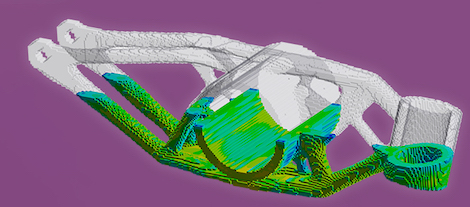
Ansys has announced details of it’s the latest release, Ansys 19.1, which seems to encompass both a range of its existing technologies and capabilities as well as start to address new areas the company had yet to explore.
A key theme for 19.1 is the release of Ansys Twin Builder. With the concept of the digital twin becoming key to many of the more advanced product engineering technology providers (Siemens, PTC, Dassault et al), it’s interesting that Ansys is diving into this area head first.
As you might imagine, the focus is heavy on the simulation aspects and how you link the digital model to your physical assets – whether that’s for product testing or more importantly, preventative maintenance and prediction.
Ansys states that costs can be greatly reduced with a digital twin, which combines accurate physics-based virtual replicas of a product with data collected using industrial internet of things (IIoT) connectivity platforms.
“The resulting intelligence and predictive maintenance insights enable engineers to analyse smart machines in real-world operating conditions and make informed decisions that substantially improve product performance — reducing risk, avoiding unplanned downtime and nurturing product development with precise and individualised feedback about product behaviour during operations.”
Alongside Digital Twin action, 19.1 also brings new tools for additive manufacturing – specifically, the simulation of the production of metal parts using a range of additive processes.
Anyone that’s been investigating this field will know that the metals based process have all manner of eccentricity and deformations that can happen during or post-build, whether that’s stresses and strains built into the part during a build, the deformation once supports are removed, or the interaction between powder and recoater blades.
There are two products – Ansys Additive Print is a system built for predicting and dealing with deformation and compensation as well as support generation.
The larger solution, Ansys Additive Suite adds a whole host of geometry preparation tools, process simulation and validation tools.
Of course, 19.1 isn’t just restricted to these subjects, there’s a bunch of updates and additions across a wide spread of Ansys’s capability, from the inclusion of material models from Granta, new work on the topology optimisation tools recently introduced, and there’s also work done to bring a new cavitation simulation techniques that remove the need for what it calls ’empirical model parameters’ or ‘extensive physical testing required by traditional approaches’.
If you want to dig into what Ansys 19.1 has to offer, there’s a wealth of resources here.






